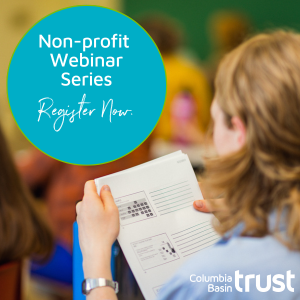It started innocuously enough with two friends shooting the breeze over a morning latte.
“I happened upon The Small House Book by Jay Shafer,” said Ted Allsopp, an off-grid enthusiast and 53-year-old former ski tourism entrepreneur with time on his hands. “Let’s build a few and see how it goes.”
“Why not,” said Gareth Roberts, a hands-on kinda guy and former solar panel entrepreneur.
Before you knew it, Hummingbird Micro Homes of Fernie was born.




The initial plan was to build 200-square-foot, trailer-hitched micro homes to rent out. But the friends soon realized Roberts’s idea of an ideal home wasn’t everybody’s.
“If I’m going to sleep in a loft, I’m perfectly okay with a ladder,” said Roberts, 46. But “we did an online research poll and it turned out pretty overwhelming for stairs.”
His notion of a bathroom was also pretty spare.
So the partners turned to custom builds.
But while potential clients could raise $40,000 for a custom micro home, they weren’t buying for lack of a space to put it.
That’s when Allsopp thought of a 12-hectare piece of land he owned near Terrace. Previously earmarked for a heli-skiing or fishing lodge, the land was 10 minutes out of town and had a paved road in.
“We could build a little village that has micro homes people could rent or purchase and put there,” said Allsopp, who also owns some bars and restaurants.
And so it happened that one year later, the two men are preparing to launch a village. Bluegrass Meadows Micro Village may well be the first micro home village in Canada. Several micro villages exist or are in progress in California, Washington and Texas.
To date, Hummingbird has built eight micro homes of which five were commissioned by clients. They have orders for six more.
The guys had thought their market would be downsizers or Fernie mine workers who’d stay in a micro home rather than a motel or work camp, then go home on their days off.
“What we’ve discovered quite quickly is some people are buying them as a vacation home, a starter home, a nanny suite or a guest suite to put on their property,” Allsopp said. They’ve had inquiries about a micro barber shop, a work camp, office and art studio.
“The total cost of a home is much less than a down payment on most large homes,” Allsopp said.
Roberts has been living in a 500-square-foot house he built for his young family of four. “You spend more time together as a family because you’re in each others faces pretty much all day,” he said. “Most people live in somebody else’s idea of a home.”
Portable micro home dimensions are limited by B.C. ministry of transport trailer regulations (13’6” high by 8’6” wide) and such givens as standard fridge sizes. But one of the biggest challenges is that a design looks completely different on paper than when you’re standing inside it, Roberts said. “I’ve learned to shift on the fly.”
Pre-launch, Bluegrass Meadows already has two confirmed renters and one confirmed “pad fee” tenant whose micro home is being built now. The project has a list of 20 prospective tenants waiting for homes to be built and to become available, said Hummingbird sales and marketing manager Ally Blake. Each home takes about three weeks to build.
The village is close to Terrace but officially in the Kitimat Stikine regional district, and zoning, building and health requirements are similar to those for an RV park, Allsopp said.
Terrace rents have risen fast over the last five years on the promise of work on LNG projects and Alcan’s plant in nearby Kitimat. Terrace one-bedroom apartments rent for $1,500 on average or about $2 per square foot, excluding utilities. In Dec 2013, the rental vacancy rate in Terrace was zero per cent and the lowest in B.C., compared to 20 per cent 10 years earlier, Blake said. Terrace city RV pad rental rates average about $600 to $700, she said.
Hummingbird will charge $750 (just over $4 per square foot) a month to rent a 200-square-foot micro home with water, sewage and separately metered natural gas. Common areas will include a laundry, community gardens and a dining cabin with wireless Internet. Individually wired Wi-Fi will be available.
“People want to live out in nature but they still want their cellphone and laptop. We’ve discovered that,” in test rentals in an R.V. park, Allsopp said.
Neither partner knows exactly where “it’s all going to go, but it’s fun to create,” said Allsopp, who has invested about $1 million into the project to date and hopes to break even within three years.
“And there’s the smaller footprint we’re creating and the off-grid systems we can put in them.”
The tiny house Roberts built for his sister-in-law is heated by wood stove, though most people prefer propane or electric heating.
“I’ve had quite a few businesses over the years, but this one I’m really enjoying,” Allsopp said.
Source: Vancouver Sun






















